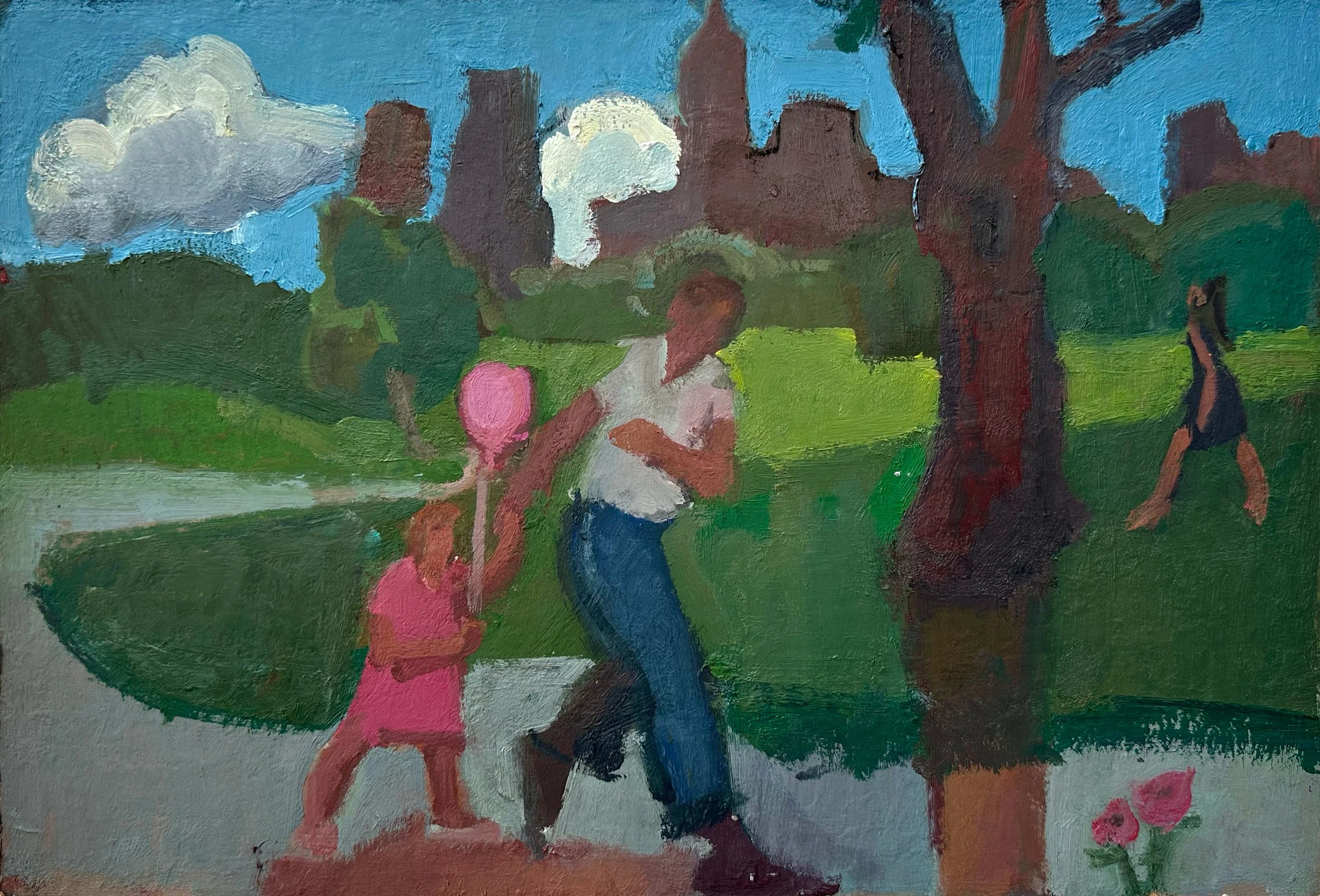A Dirty Arcadia
FOR IMMEDIATE RELEASE
A Dirty Arcadia
The debut solo exhibition of NYC-based painter Liam Murphy-Torres
Francis Cook Gallery
Fasanenstraße 42 10719 Berlin, Germany
Exhibition Dates:
11 September – 14 September 2025, 11:00 - 6:00 PM
Opening Artist Reception:
Friday, 12 September 2025, 6:00 - 8:00 PM
—
Francis Cook Gallery is pleased to announce A Dirty Arcadia, the debut solo exhibition of NYC-based painter Liam Murphy-Torres, on view from 11 September to 15 September 2025.
In this new body of work, Murphy-Torres reimagines motifs of contemporary urban life through the lens of modernist painting traditions. Murphy-Torres captures familiar scenes—a playground in use, a quiet moment in a café, a commuter hurrying past—using them as starting points for pictures that ultimately reflect the process of painting itself. Broad, expressive applications of paint dissolve subjects into sensations of color and shape, and a tension is generated between recognizable forms and freewheeling abstraction.
At the heart of the show lies the trope of Arcadia—the art historical, mythical, and literary ideal of figures at leisure in an idyllic landscape. For Murphy-Torres, this is not a subject to be literally depicted but an attitude to be adopted. His search for the ideal is carried out pragmatically, requiring not a perfect place but a different kind of looking. City parks, the streets near his studio, city rooftops—all become occasions to search for paradise. He celebrates a moment of pleasure at the meeting of two colors, a dynamic or graceful pose, or a characteristic shape. Through the use of paint itself—bold color, unforced abstraction, and a masterful sense of composition—he redefines the modern Arcadia not as a perfectly untouched pastoral scene but as the spaces and moments one chooses to value.
The exhibition will be accompanied by a fully illustrated catalog featuring an essay by Olivia Hiester.
Liam Murphy-Torres (b. 2000, Boston) is an American painter currently pursuing his MFA at the New York Studio School. He received his BFA from the Pennsylvania Academy of the Fine Arts. He is a recipient of the Elizabeth Greenshields Foundation grant, and his work has been exhibited in New York, London, Philadelphia, and Berlin.
For press inquiries and further information, please contact:
Francis Cook Gallery franciscookmail@icloud.com franciscookgallery.com
—
DE
ZUR SOFORTIGEN VERÖFFENTLICHUNG
Ein schmutziges Arkadien
Die erste Einzelausstellung des in New York ansässigen Malers Liam Murphy-Torres
Francis Cook Gallery
Fasanenstraße 42 10719 Berlin, Germany
Ausstellungstermine:
11 September bis 15 September 2025
Ausstellungstermine:
Freitag, 12 September 2025, 18 bis 20 Uhr
—
Die Francis Cook Gallery freut sich, die erste Einzelausstellung von Liam Murphy-Torres, A Dirty Arcadia, bekannt zu geben. Die Ausstellung unter dem deutschen Titel Ein schmutziges Arkadien wird vom 11. bis 15. September 2025 zu sehen sein. Der in New York ansässige Maler Murphy-Torres interpretiert in seiner Werkreihe das zeitgenössische Stadtleben aus der Perspektive moderner Maltraditionen neu. Murphy-Torres fängt bekannte Szenen ein —einen Spielplatz, einen ruhigen Moment im Café, einen vorbei eilenden Pendler— Sie dienen als Ausgangspunkte für Bilder, die letztlich den Malprozess selbst widerspiegeln. Breite, ausdrucksstarke Farbaufträge lösen Motive in Farb- und Formempfindungen auf. So entsteht eine Spannung zwischen erkennbaren Formen und sorgloser Abstraktion. Im Mittelpunkt der Ausstellung steht der Topos Arkadien—das kunsthistorische, mythische und literarische Ideal von Figuren in der Freizeit in einer idyllischen Landschaft. Für Murphy-Torres ist dies kein Thema, das wörtlich dargestellt werden soll, sondern eine Haltung, die übernommen werden kann. Seine Suche nach dem Ideal erfolgt pragmatisch und erfordert keinen perfekten Ort, sondern ein anderes Betrachten. Stadtparks, Straßen in der Nähe seines Studios, Hausdächer— werden zu Gelegenheiten, nach dem Paradies zu suchen. In seinen Werken würdigt er den genussvollen Moment von zwei zusammentreffenden Farben, einer dynamischen oder anmutigen Pose oder einer charakteristischen Form. Durch den Einsatz von Farbe —kräftige Farbauswahl, ungezwungene Abstraktion und ein meisterhaftes Gespür für Komposition— definiert Murphy-Torres das moderne Arkadien nicht als unberührte ländliche Szene, sondern als die Räume und Momente, die man sich entscheidet wertzuschätzen.
Die Ausstellung wird von einem illustrierten Katalog mit einem Essay von Olivia Hiester begleitet.
Liam Murphy-Torres (geb. 2000, Boston) ist ein amerikanischer Maler, der derzeit seinen MFA an der New York Studio School anstrebt. Er erhielt seinen BFA von der Pennsylvania Academy of the Fine Arts. Er ist Empfänger des Stipendiums der Elizabeth Greenshields Foundation und seine Arbeiten wurden schon in New York, London, Philadelphia und Berlin ausgestellt.
Für Presseanfragen und weitere Informationen wenden Sie sich bitte an:
Francis Cook Gallery, franciscookmail@icloud.com, franciscookgallery.com
Location
Fasanenstraße 42, 10719 Berlin, Germany
Exhibition Dates
September 11, 2025 - September 14, 2025, 11:00 - 6:00 PM
Opening Artist Reception
Friday, July 12, 2025 6:00 - 8:00 P.M.


